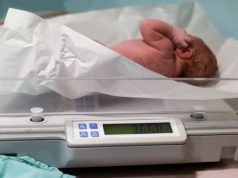Most associations with caffeine, alcohol, tobacco, and marijuana exposure diminish when controlling for environmental, genetic factors
By Lori Solomon HealthDay Reporter
TUESDAY, Feb. 6, 2024 (HealthDay News) — Many associations between prenatal substance exposure (PSE) and mental health in children aged 10 to 12 years are eliminated when controlling for environmental and genetic factors, according to a study published online Jan. 30 in PNAS Nexus.
Zixin Gu, from Fudan University in Shanghai, and colleagues used data from the adolescent brain cognitive development cohort (9,838 children; baseline age, 9.92 years) to examine associations of PSE-caffeine, alcohol, tobacco, and marijuana with children’s health (ages 10 to 12 years), cognition, and brain metrics when controlling for the environmental and genetic contexts.
The researchers found that compared with the baseline, PSE-alcohol had the most health associations in an adjusted analysis that were persistent over a two-year period from preadolescence to adolescence, including associations with more sleep and mental health problems, improved cognitive functions, and larger brain volumes. These associations with mental health and crystallized cognition were mediated by the surface areas of the frontal and parietal cortices, respectively. Associations between PSE-alcohol and marijuana and mental health problems were attenuated by lower risk scores of the familial context. Late-onset associations of PSE-marijuana with externalizing problems were enhanced by higher polygenic risk scores for substance use disorders.
“Results support the ‘health-in-context’ concept, emphasizing modifiable factors mitigating adverse PSE effects,” the authors write.
Copyright © 2024 HealthDay. All rights reserved.








